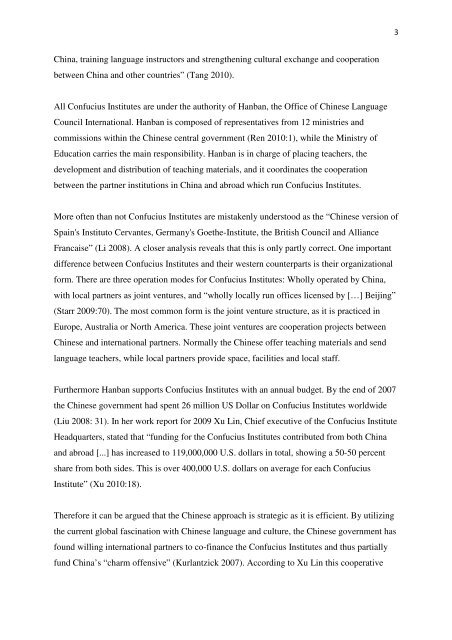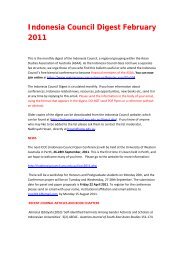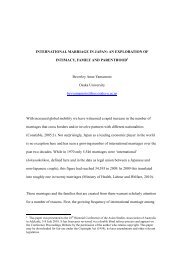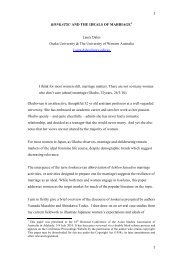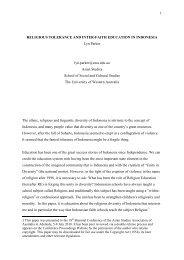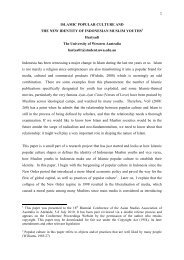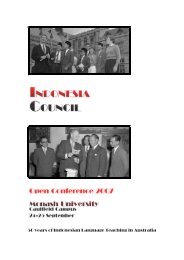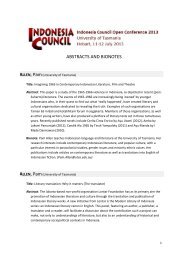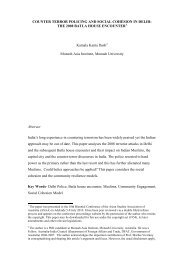CONFUSION ABOUT CONFUCIUS INSTITUTES Soft Power Push or ...
CONFUSION ABOUT CONFUCIUS INSTITUTES Soft Power Push or ...
CONFUSION ABOUT CONFUCIUS INSTITUTES Soft Power Push or ...
Create successful ePaper yourself
Turn your PDF publications into a flip-book with our unique Google optimized e-Paper software.
China, training language instruct<strong>or</strong>s and strengthening cultural exchange and cooperation<br />
between China and other countries” (Tang 2010).<br />
All Confucius Institutes are under the auth<strong>or</strong>ity of Hanban, the Office of Chinese Language<br />
Council International. Hanban is composed of representatives from 12 ministries and<br />
commissions within the Chinese central government (Ren 2010:1), while the Ministry of<br />
Education carries the main responsibility. Hanban is in charge of placing teachers, the<br />
development and distribution of teaching materials, and it co<strong>or</strong>dinates the cooperation<br />
between the partner institutions in China and abroad which run Confucius Institutes.<br />
M<strong>or</strong>e often than not Confucius Institutes are mistakenly understood as the “Chinese version of<br />
Spain's Instituto Cervantes, Germany's Goethe-Institute, the British Council and Alliance<br />
Francaise” (Li 2008). A closer analysis reveals that this is only partly c<strong>or</strong>rect. One imp<strong>or</strong>tant<br />
difference between Confucius Institutes and their western counterparts is their <strong>or</strong>ganizational<br />
f<strong>or</strong>m. There are three operation modes f<strong>or</strong> Confucius Institutes: Wholly operated by China,<br />
with local partners as joint ventures, and “wholly locally run offices licensed by […] Beijing”<br />
(Starr 2009:70). The most common f<strong>or</strong>m is the joint venture structure, as it is practiced in<br />
Europe, Australia <strong>or</strong> N<strong>or</strong>th America. These joint ventures are cooperation projects between<br />
Chinese and international partners. N<strong>or</strong>mally the Chinese offer teaching materials and send<br />
language teachers, while local partners provide space, facilities and local staff.<br />
Furtherm<strong>or</strong>e Hanban supp<strong>or</strong>ts Confucius Institutes with an annual budget. By the end of 2007<br />
the Chinese government had spent 26 million US Dollar on Confucius Institutes w<strong>or</strong>ldwide<br />
(Liu 2008: 31). In her w<strong>or</strong>k rep<strong>or</strong>t f<strong>or</strong> 2009 Xu Lin, Chief executive of the Confucius Institute<br />
Headquarters, stated that “funding f<strong>or</strong> the Confucius Institutes contributed from both China<br />
and abroad [...] has increased to 119,000,000 U.S. dollars in total, showing a 50-50 percent<br />
share from both sides. This is over 400,000 U.S. dollars on average f<strong>or</strong> each Confucius<br />
Institute” (Xu 2010:18).<br />
Theref<strong>or</strong>e it can be argued that the Chinese approach is strategic as it is efficient. By utilizing<br />
the current global fascination with Chinese language and culture, the Chinese government has<br />
found willing international partners to co-finance the Confucius Institutes and thus partially<br />
fund China’s “charm offensive” (Kurlantzick 2007). Acc<strong>or</strong>ding to Xu Lin this cooperative<br />
3


